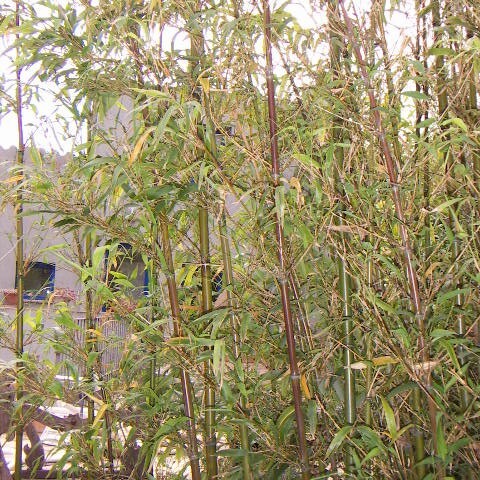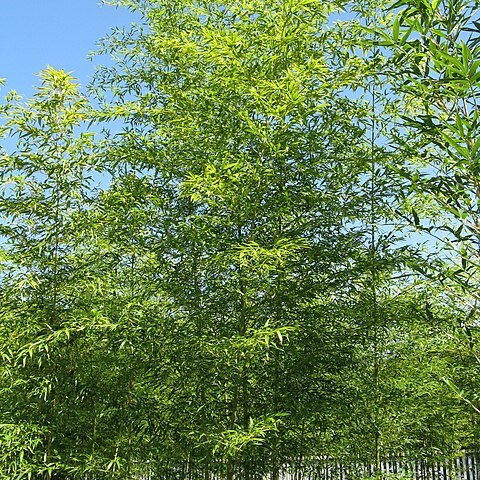Culms 3–9 m, 1–4 cm in diam.; internodes initially green, later brownish, terete, 10–30 cm, glabrous, hollow. Branches 3 per node. Culm sheaths essentially glabrous but proximally hairy; auricles minute; oral setae few; ligule 1–1.5 mm, apex truncate, ciliate; blade narrowly lanceolate, apex acuminate. Leaves 3–7(–10) per ultimate twig; sheath ca. 4 cm, sparsely pubescent; auricles obscure; ligule truncate, 1–1.5 mm; blades narrowly lanceolate, 8–20 × 1.5–2.5 cm, papery, glabrous or abaxially proximally pubescent, secondary veins 6–8-paired, transverse veins present, base rounded or broadly cuneate, contracted into a short pseudopetiole, margin serrulate, apex acuminate. Inflorescence panicle-like, subtended by ovate or lanceolate, leathery, glabrous, sheathlike spathes 3.5–4 cm. Pseudospikelets 1 or 2 subtended by a spathe; spikelet narrowly terete, 5–10 cm; florets 3–6; rachilla ca. 1 cm. Glumes always absent; lemmas ovate or broadly lanceolate, 1.5–3 cm, leathery, ciliate, ca. 20-veined; palea broadly lanceolate, 1.8–2 cm, 3-veined, apex bifid; lodicules ca. 5 mm. Filaments ca. 2 cm; anthers yellow, ca. 1.1 cm. Ovary terete, ca. 4 mm, glabrous; styles ca. 4 mm; stigmas 3, plumose. Caryopsis unknown.
More
Thicket-forming with rhizomes shortly creeping. Culm usually 4-6 m × 1.3-2 cm diam. below, upper internodes flattened, glaucous-white when young, becoming olive-green and often reddish brown on exposed parts, erect, semi-fastigiate. Culm-sheath glabrous, to c. 20 × 8 cm on large culms, abaxially greenish, or ± entirely green on small peripheral culms, adaxially shining light purple; ligule c. 2 mm, ciliate; oral bristles 0; sheath-blade 4-11 cm, narrow linear. Leaf-sheath with oral bristles. Ligule truncate. Leaf-blade 8-18-(21) × 1-2-(2.3) cm, linear-lanceolate, finely long acuminate. Spikes 3-7 cm, purplish. Lemma 1.8-2.2 cm, aristate. Lodicules 4-5 mm, ciliate. Anthers long-exserted, 7-8 mm.
A tall upright bamboo. It grows 7 m high and spreads 2 m wide. The canes are shiny and mid green. They are 1-4 cm wide. They have few leaves on the lower sections. There are purple-brown stripes on the canes. There are 3 branches at each node.


